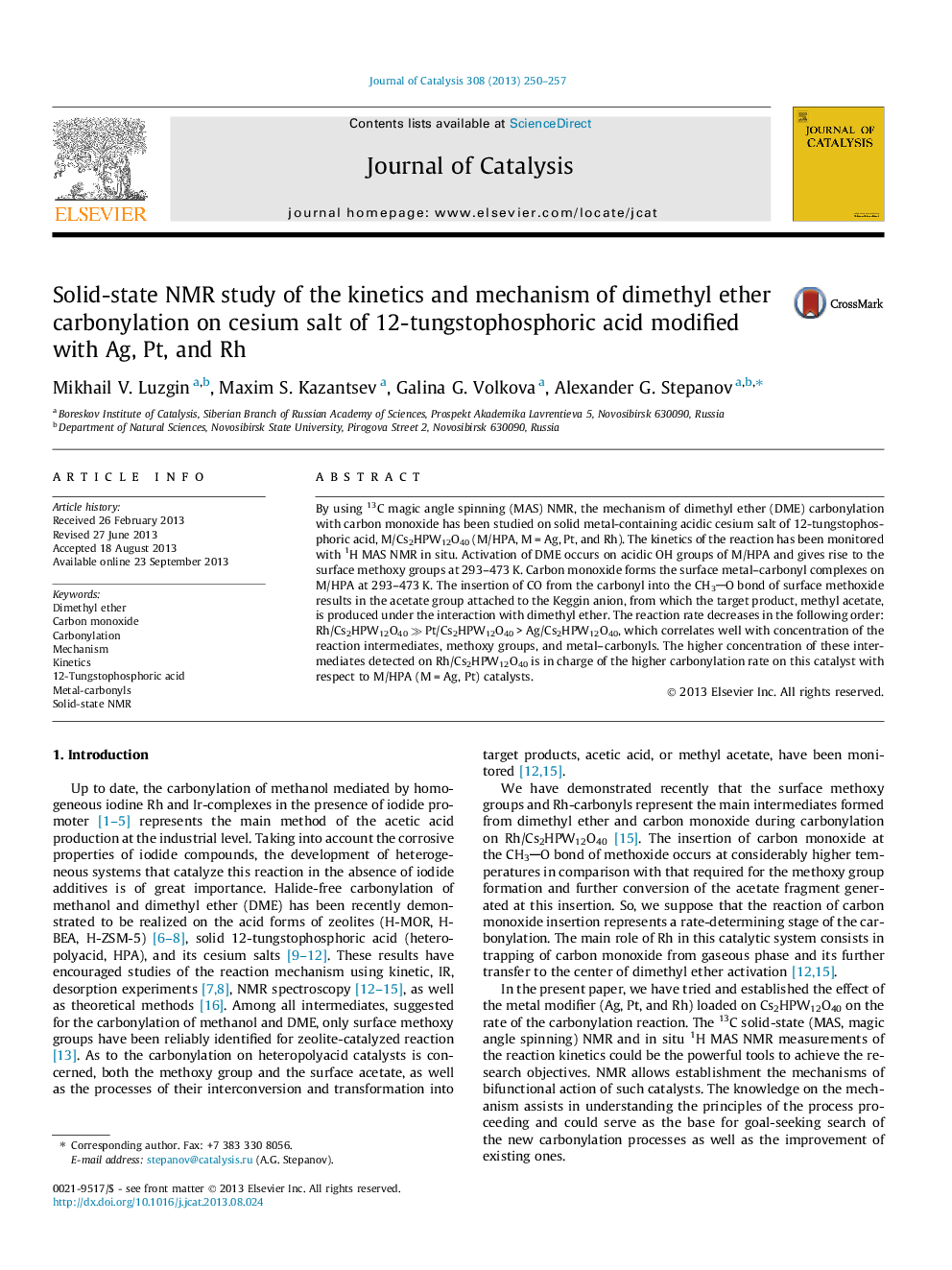| Article ID | Journal | Published Year | Pages | File Type |
|---|---|---|---|---|
| 61202 | Journal of Catalysis | 2013 | 8 Pages |
•Surface methoxy groups and metal–carbonyls are detected as intermediates of carbonylation reaction.•The reaction rate decreases in the following order: Rh/HPA ≫ Pt/HPA > Ag/HPA.•The reaction rate correlates with the concentration of both detected intermediates.•The concentration of the intermediate methoxy group is determined by the acidity of OH groups on which they are formed.•The concentration of metal–carbonyls is determined by their stability.
By using 13C magic angle spinning (MAS) NMR, the mechanism of dimethyl ether (DME) carbonylation with carbon monoxide has been studied on solid metal-containing acidic cesium salt of 12-tungstophosphoric acid, M/Cs2HPW12O40 (M/HPA, M = Ag, Pt, and Rh). The kinetics of the reaction has been monitored with 1H MAS NMR in situ. Activation of DME occurs on acidic OH groups of M/HPA and gives rise to the surface methoxy groups at 293–473 K. Carbon monoxide forms the surface metal–carbonyl complexes on M/HPA at 293–473 K. The insertion of CO from the carbonyl into the CH3O bond of surface methoxide results in the acetate group attached to the Keggin anion, from which the target product, methyl acetate, is produced under the interaction with dimethyl ether. The reaction rate decreases in the following order: Rh/Cs2HPW12O40 ≫ Pt/Cs2HPW12O40 > Ag/Cs2HPW12O40, which correlates well with concentration of the reaction intermediates, methoxy groups, and metal–carbonyls. The higher concentration of these intermediates detected on Rh/Cs2HPW12O40 is in charge of the higher carbonylation rate on this catalyst with respect to M/HPA (M = Ag, Pt) catalysts.
Graphical abstractThe bifunctional character of the dimethyl ether carbonylation with carbon monoxide on M/Cs2HPW12O40 (M = Ag, Pt, and Rh) has been established by 13C MAS NMR. The reaction rates measured by high-temperature 1H MAS NMR correlate well with the concentration of the intermediates, methoxy groups, and metal–carbonyls. The highest concentration of both detected intermediates found for the case with Rh/Cs2HPW12O40 provides the highest reaction rate on this catalyst.Figure optionsDownload full-size imageDownload high-quality image (223 K)Download as PowerPoint slide
